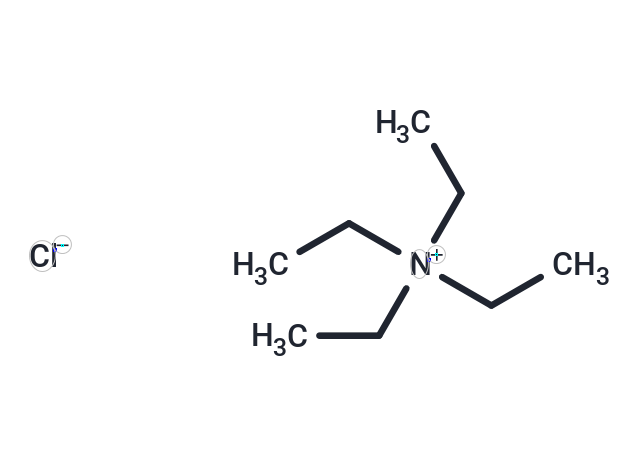Shopping Cart
- Remove All
 Your shopping cart is currently empty
Your shopping cart is currently empty

Tetraethylammonium chloride is a quaternary ammonium compound. It is a non-selective potassium channel blocker. It is a good substrate for organic cation transporter proteins and has antitumor properties.

| Pack Size | Price | Availability | Quantity |
|---|---|---|---|
| 1 g | $31 | In Stock | |
| 5 g | $70 | In Stock | |
| 10 g | $98 | In Stock |
| Description | Tetraethylammonium chloride is a quaternary ammonium compound. It is a non-selective potassium channel blocker. It is a good substrate for organic cation transporter proteins and has antitumor properties. |
| In vitro | Ex vivo guinea pig airway rings, human ASM strips and small peripheral airways in rat lungs slices relaxed in response to niflumic acid following depolarization-induced contraction induced by K(+) channel blockade with tetraethylammonium chloride (TEA).?In isolated human airway smooth muscle cells TEA induce depolarization as measured by a fluorescent indicator or whole cell patch clamp and this depolarization was reversed by niflumic acid[1]. |
| Molecular Weight | 165.7 |
| Formula | C8H20ClN |
| Cas No. | 56-34-8 |
| Smiles | [Cl-].CC[N+](CC)(CC)CC |
| Relative Density. | 1.08 g/cm3 |
| Storage | Powder: -20°C for 3 years | In solvent: -80°C for 1 year | Shipping with blue ice. | |||||||||||||||||||||||||||||||||||
| Solubility Information | DMSO: 32.5 mg/mL (196.14 mM), Sonication is recommended. H2O: 100 mg/mL (603.50 mM), Sonication is recommended. | |||||||||||||||||||||||||||||||||||
Solution Preparation Table | ||||||||||||||||||||||||||||||||||||
DMSO/H2O
| ||||||||||||||||||||||||||||||||||||

Copyright © 2015-2025 TargetMol Chemicals Inc. All Rights Reserved.